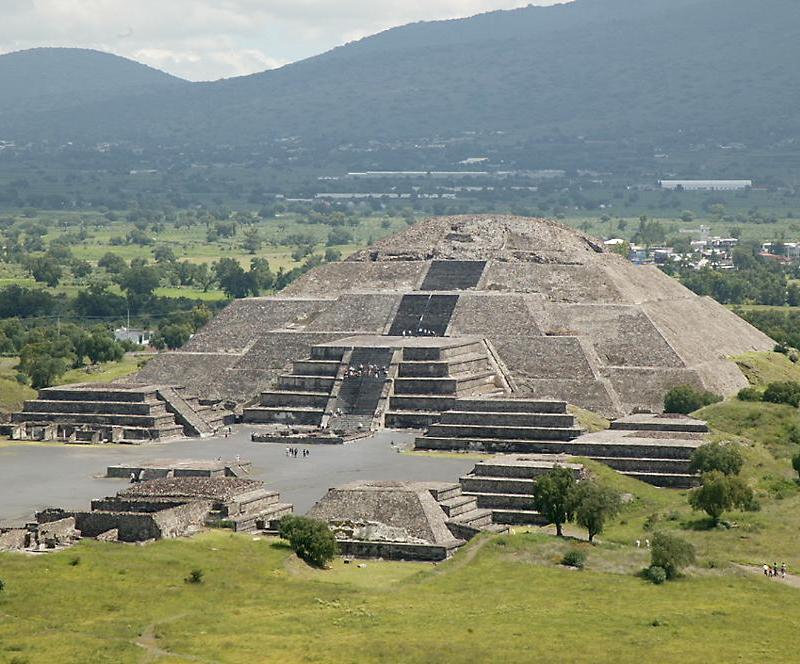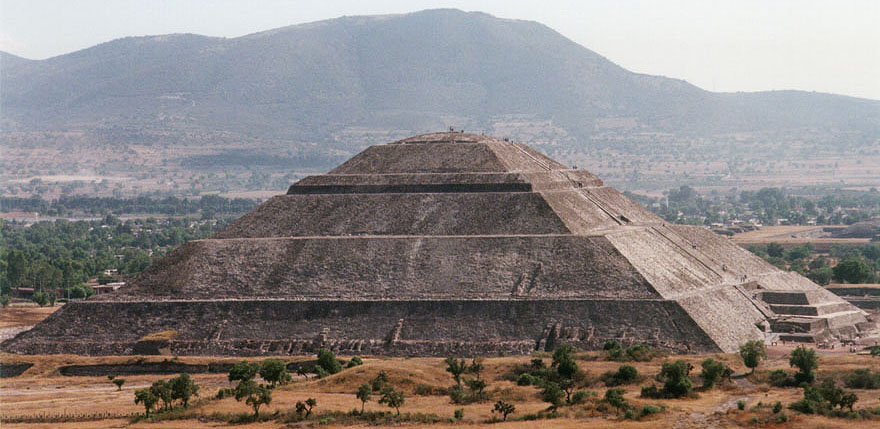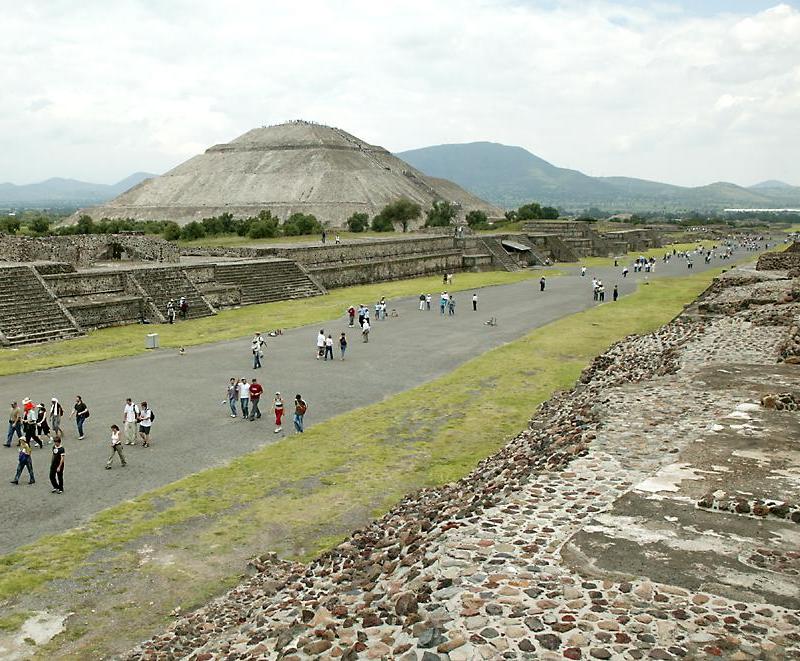For this week’s blog entry, I will be taking a virtual
tour of the fascinating city of Teotihuacan. When taking this walk through
Teotihuacan I will be focusing on the pyramids as well as the Street of the
Dead Complex. Between these two fascinating uses of space and pieces of
architecture, I hope to learn more about what they are and get a stronger idea
about the themes involved.
To
begin, I will be looking at the Pyramid of the Moon. This pyramid, which was
once home to two tomb sites, was built in six stages, each stage building up
onto the original structure. One of the
tombs found four people, while the other tomb was found to be the tomb of the
great Goddess, whose statue was said to have mounted this great structure at
one point. In addition to being a place that emphasized power over the area, it
is also quite large in structure. It is the second largest structure in
Teotihuacan. Also, it was created with an artistic nature in which its
appearance resembles the mountain Cerro Gordo which is nearby. When staring up
at the pyramid, the overall dominant size allows me to see it conveyed power
over the city. Most importantly to me, I loved the contrast between the
architecture and the physical environment around it. It tells me a story about
how they adapted to the landscape.
As I
continue on my journey through Teotihuacan I arrive at the Pyramid of the Sun.
This pyramid is the largest structure in Teotihuacan. This pyramid is the third
largest in the world, and it is located in the middle of the city showing its
centrality and importance. Looking at it I can feel the presence as it towers
above me intricate and defined. The pyramid looks as if it has been weathered
and brutalized with the passage of time, but researchers said that an alter
used to be solidified on top which means that this place probably stood for
religious and cultural purposes in the area. Also, this pyramid was created
strategically so that astrological events could be monitored, as well as the
monitoring of the agricultural practices of the time. This pyramid was also
said to have been a tomb, but due to the destruction of it over time, and lack
of intensity in the excavations, it is unknown.
After looking at both of these pyramids, I am able to see that they have religious importance, but they also control the theme of power. Standing tall with such centrality in the city, these pyramids look over the city and show the citizens who is in power. The grid like pattern of the city around these structures is also important because it shows how the space was organized like a hierarchy in which the elite lived near the center and the less fortunate on the fringe. This is a very similar characteristic to what I found on my last trip to Timgad and Pikillacta.
Finally, I walked to the Street
of the Dead Complex. This complex is one of the most recognizable places in
Teotihuacan and was known for its large courtyards in which rituals were
performed. The open space between the two compounds on either side of the street, allows for a very open feel. When looking at the areas, they look like the perfect spaces for
people to come together, which proposes the possible theme of unity and
community. This place was also noted for most likely being the place for
administrative work and residences. It also acts as a division between the two
other areas of the city, suggesting the themes of power, space, and
colonialism.
Overall, as I look at the whole city, it is fairly easy for me to see the results of dual rulership in the architecture and in the use of space. I think Teotihuacan is actually beautiful in the way the city contrasts the mountains in the background, and I find that the architecture shows meaning with respect to the culture and the physical environment. I am able to see many similarities here to other places I have visited such as the pyramids in Egypt, and the grid pattern in Timgad which allows me to understand that these urban trends defining cities have made their ways to different cultures. That is it for Teotihuacan, stay tuned for my next tour!


